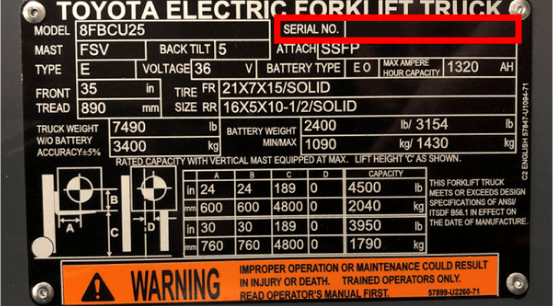3 Tips for Lumber Yard Efficiency

Running an efficient and productive lumber yard is a tall task. Shipment frequency is increasing and lead time expectations are getting shorter. To maintain a competitive advantage, it can be necessary to rethink your operation. It’s easy to talk about the load capacity of a forklift fleet and buying the right forklift for the job. These are important. But there are other steps you can take to shorten lead times and increase productivity.
Tips to Increase Lumber Yard Efficiency
Tip #1: Yard maintenance is Just as Important as Forklift Maintenance
Lumber yard operations are often subject to having their driving surfaces take on wear and tear at a fast rate. Uneven surfaces or debris from lumber can cause damage to your material handling equipment. Assuring that the area is kept tight and level can extend the life of your forklift.
Tip #2: A Better Layout Could Mean Better Profits
One way to increase margins is by reducing your operating costs. Being strategic about where to place what product can reduce drive time, leading to less spending on fuel and maintenance/replacement of forklifts. Taking note of trends within your lumber yard is helpful when making layout decisions. For example, what kinds of wood are often bought jointly? Having those near each other can help your order pickers. You might also consider how you sell various units of lumber. In the event a product is typically purchased in separated amounts, you can store those in a location that creates a convenient route for your forklift operators to make multiple runs. On the other hand, if you traditionally move an entire bundle with a high capacity forklift, having a space available for your larger forklifts to do simple lifting might be an option to explore.
Tip #3: Think Ahead to Reduce Time
Reducing lead time for sending orders out could be an area of opportunity for your facility. While maintaining the best routes in your lumber yard is important, you can also optimize the process of preparing loads to be shipped. Some facilities are increasing efficiency by creating a pre-build system. For example, after placing all paper/electronic order forms together, your forklift operators will bring the right sized, previously cut lumber and build out all loads beforehand. If done correctly, an order will be complete and ready to go when the truck arrives for pickup.
Depending upon the size of your operation, you may be able to employ someone part or full-time who handles the task of scheduling these pre-built loads and managing your inventory. This type of planning can go a long way in ensuring your operation is always one step ahead in regards to inventory management and efficiency. Having these pre-built loads labelled in a way in which they are easily identifiable by your forklift operators further improves your efficiency and throughput. This can be easily accomplished by simple changes to eliminate the amount of time it takes to identify the order on the build sheet. Font size, placement and even length of the order number can help to reduce the amount of time it takes to identify each build and can help to eliminate costly downtime.


